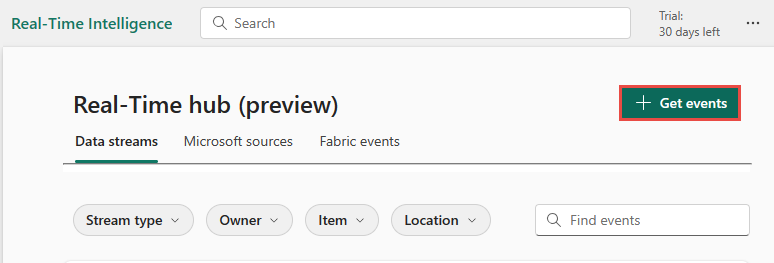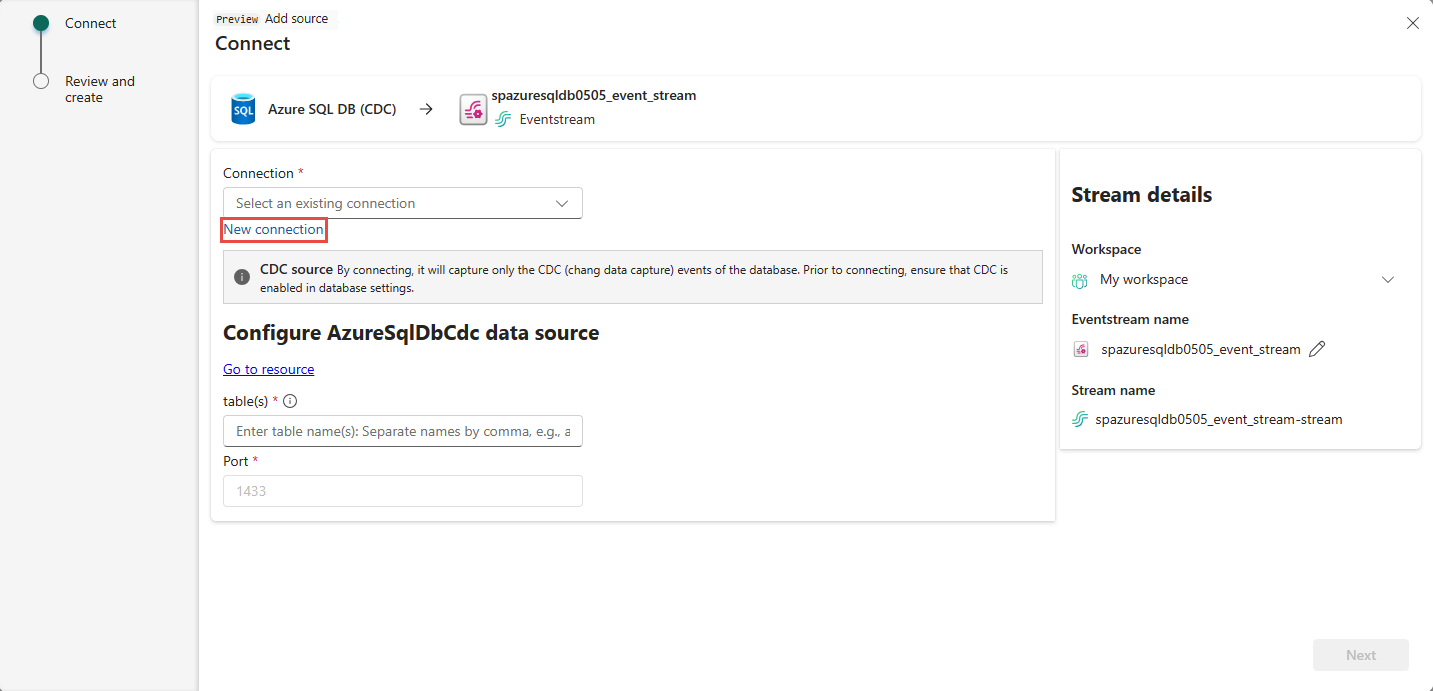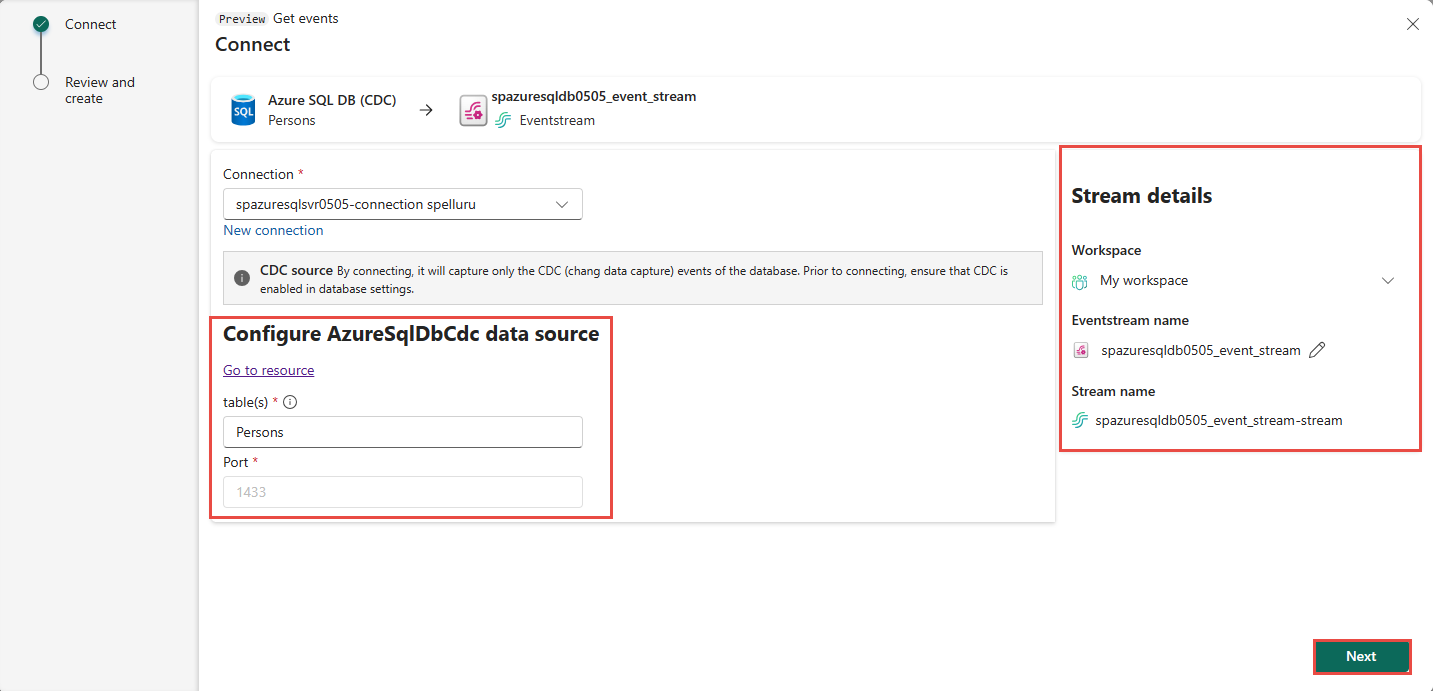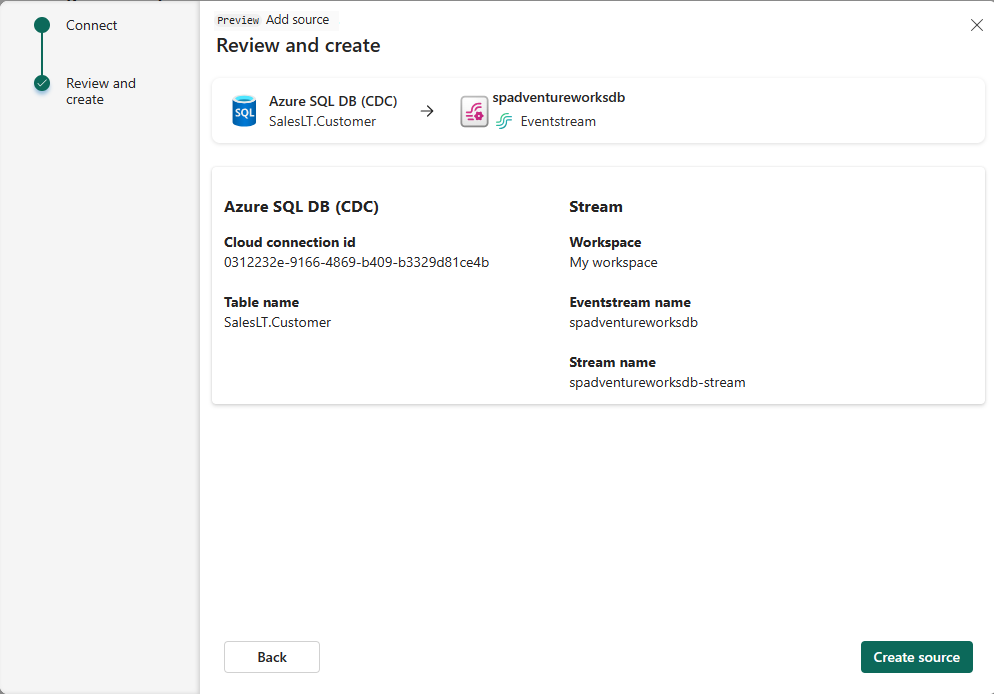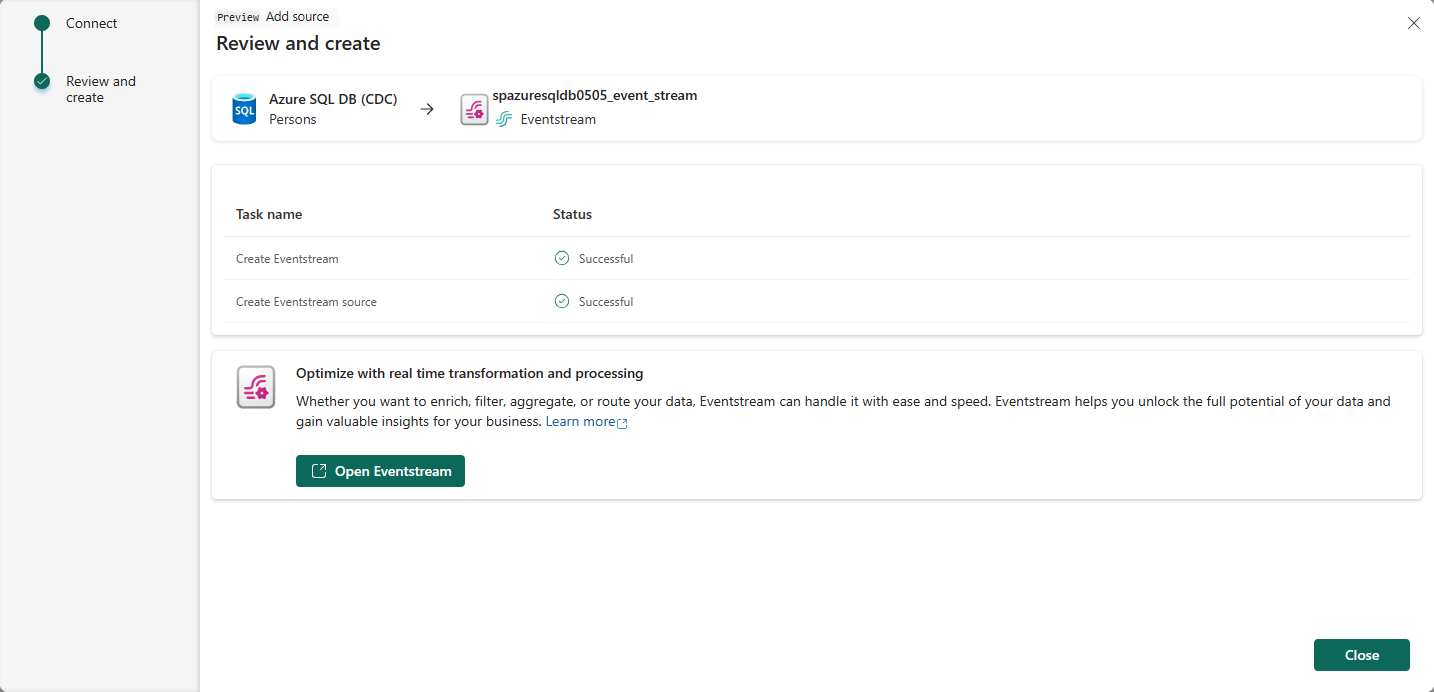Add Azure SQL Database Change Data Capture (CDC) as source in Real-Time hub (preview)
This article describes how to get events from Azure SQL Database Change Data Capture (CDC) into Fabric Real-Time hub. The Azure SQL Database CDC source connector allows you to capture a snapshot of the current data in an Azure SQL database. The connector then monitors and records any future row-level changes to this data.
Note
Real-Time hub is currently in preview.
Prerequisites
- Get access to the Fabric premium workspace with Contributor or above permissions.
- A running Azure SQL server with an Azure SQL database.
- Membership in the sysadmin fixed server role for the SQL Server, and db_owner role on the database.
- CDC enabled on your Azure SQL database by running the stored procedure
sys.sp_cdc_enable_db. For details, see Enable and disable change data capture.
Note
- Mirroring shouldn't be enabled in your database.
- Multiple tables CDC isn't supported.
Get events from an Azure SQL Database CDC
You can get events from an Azure SQL Database CDC into Real-Time hub in one of the ways:
- Using the Get events experience
- Using the Microsoft sources tab
Launch Get events experience
Switch to the Real-Time Intelligence experience in Microsoft Fabric. Select Microsoft Fabric on the left navigation bar, and select Real-Time Intelligence.
Select Real-Time hub on the left navigation bar.
On the Real-Time hub page, select + Get events in the top-right corner of the page.
Use instructions from the Add Azure SQL Database CDC as a source section.
Microsoft sources tab
In Real-Time hub, switch to the Microsoft sources tab.
In the Source drop-down list, select Azure SQL DB (CDC).
For Subscription, select an Azure subscription that has the resource group with your SQL database.
For Resource group, select a resource group that has your SQL database.
For Region, select a location where your SQL database is located.
Now, move the mouse over the name of the SQL database that you want to connect to Real-Time hub in the list of databases, and select the Connect button, or select ... (ellipsis), and then select the Connect button.

To configure connection information, use steps from the Add Azure SQL Database CDC as a source section. Skip the first step of selecting Azure SQL DB (CDC) as a source type in the Get events wizard.
Add Azure SQL Database CDC as a source
On the Select a data source screen, select Azure SQL DB (CDC).
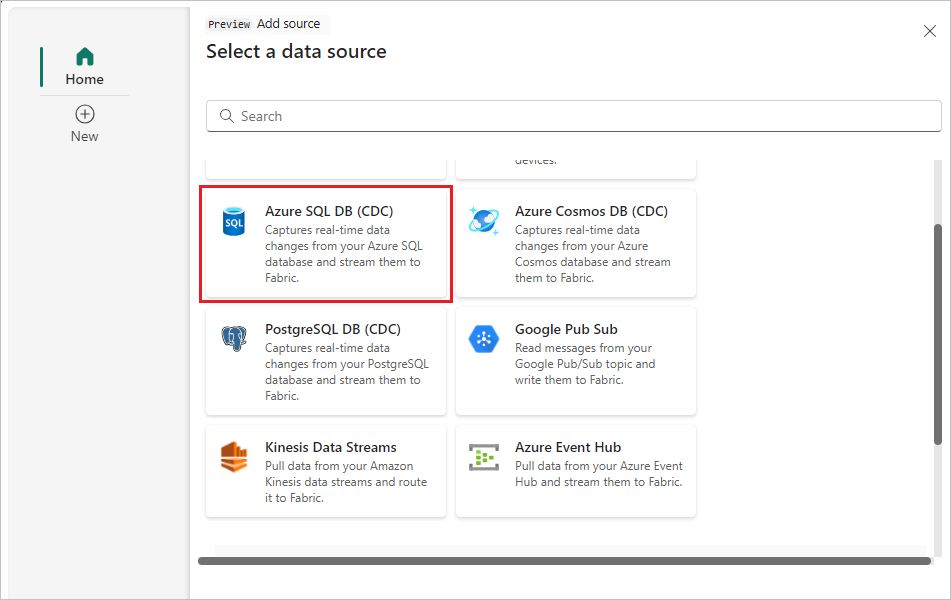
On the Connect page, select Go to resource to navigate to the Azure SQL database. Take a note of the server name on the Overview page. It's in the following format:
myazuresqlserver.database.windows.net.On the Connect page, select New connection.
In the Connection settings section, enter the following values for your Azure SQL database:
Server: Enter the Azure SQL server name from the Azure portal.
Database: Enter the Azure SQL database name from the Azure portal.

Scroll down, and in the Connection credentials section, follow these steps.
For Connection name, enter a name for the connection.
For Authentication kind, select Basic.
Note
Currently, Fabric event streams supports only Basic authentication.
Enter Username and Password for the database.
Select Connect.
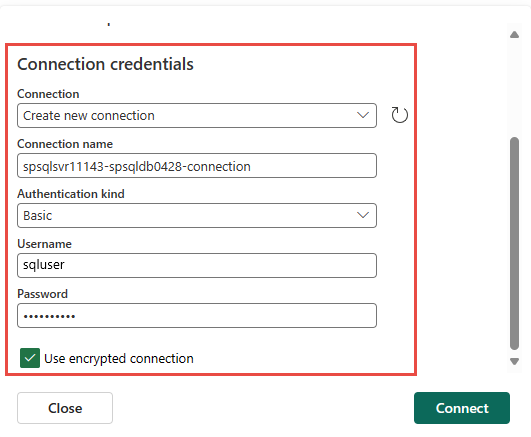
Now, on the Connect page, do these steps:
Enter the name of the SQL table.
For Port, Enter the port number (default is 1433).
In the Stream details section to the right, select the Fabric workspace where you want to save the eventstream that the Wizard is going to create.
For eventstream name, enter a name for the eventstream. The wizard creates an eventstream with the selected Azure SQL Database CDC as a source.
The Stream name is automatically generated for you by appending -stream to the name of the eventstream. You see this stream on the Data streams tab of Real-Time hub when the wizard finishes.
Select Next.
On the Review and create screen, review the summary, and then select Create source.
View data stream details
On the Review and create page, if you select Open eventstream, the wizard opens the eventstream that it created for you with the selected Azure SQL Database CDC as a source. To close the wizard, select Close at the bottom of the page.
In Real-Time hub, switch to the Data streams tab of Real-Time hub. Refresh the page. You should see the data stream created for you as shown in the following image.
For detailed steps, see View details of data streams in Fabric Real-Time hub.
Related content
To learn about consuming data streams, see the following articles:
Feedback
În curând: Pe parcursul anului 2024, vom elimina treptat Probleme legate de GitHub ca mecanism de feedback pentru conținut și îl vom înlocui cu un nou sistem de feedback. Pentru mai multe informații, consultați: https://aka.ms/ContentUserFeedback.
Trimiteți și vizualizați feedback pentru


